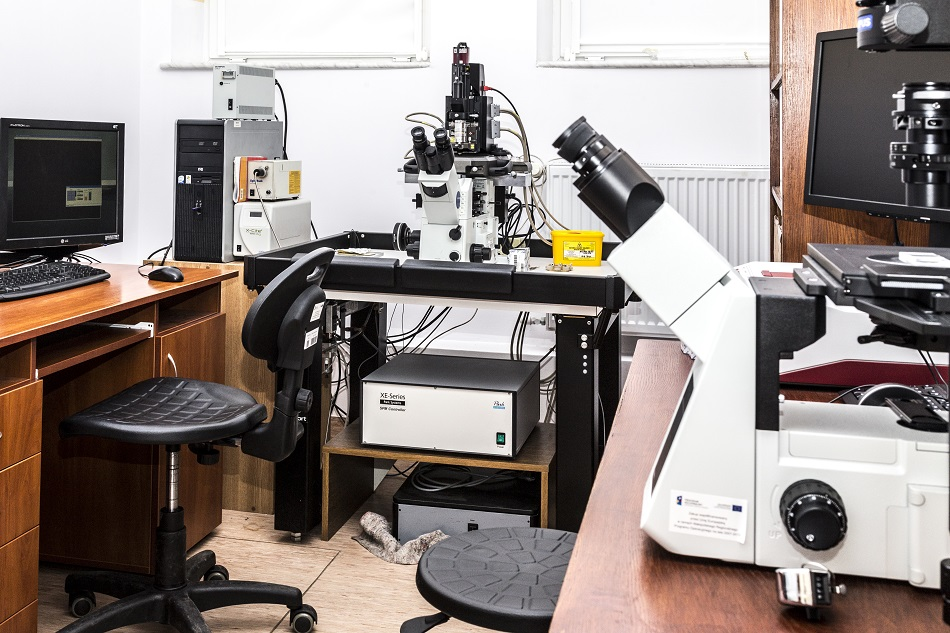
Image Credit: dominika zara/Shutterstock.com
Thin films can play a valuable role in anything from food packaging to photovoltaics, and a major step in creating any new thin film is being able to characterize its surface and physical qualities in extremely fine detail.
Created with an atomic force microscope (AFM), three-dimensional modeling of a thin film's nanoscale topography can provide critical data on a film's qualities, including its roughness, flaws, various phases of its surface and growth modes.
Surface factors like roughness and texture tend to be associated with a film’s functional responses. For example, the microstructure of carbon coatings on cutting tools translates to friction, while roughness in biological thin films translates to wettability. Gauging thin film roughness during the development process also offers a way to measure key control metrics and uncover new insights on structure-property relations. AFM analyses can also be used to determine outcomes of post-fabrication treatments that are often applied to thin films, as well as to examine product failure issues.
An AFM typically creates topographic imaging through what is known as 'tapping' mode. This setting involves oscillating the AFM cantilever close to its resonance frequency. The probe only touches the sample during a portion of its oscillation, minimizing damage to the probe tip and the sample. Additionally, a small contact area and extremely sharp probe tips make it possible for atomic-scale structures to be resolved.
Application-Specific Testing
During incorporation or usage phases, a thin film might be subjected to non-ambient conditions like immersion in liquid or extreme temperatures. Replicating these conditions during testing makes AFM outcomes more useful and allows analyses of durability and reliability qualities. Evaluating how surface topography, functionality, or mechanical qualities shift with temperature and other factors can also lead to fundamental insights on thin-film functionality.
For some applications, potential deterioration and electrochemical reactions on a thin film are crucial considerations. The use of electrochemistry test cells allows an in-situ AFM analysis of oxidation and other electrochemical processes. Electrochemistry cells also enable researchers to precisely observe nanoscale structural changes as reactions take place.
Many uses of thin films take advantage of their particular functional qualities, leveraging electric or magnetic attributes to achieve the desired result, for instance. Topographic analyses on thin films offer insight but cannot directly evaluate functionality. However, there are many AFM tactics meant to assess functional qualities. These modes leverage the AFM’s extreme pressure sensitivity to analyze electric, magnetic, and other interactions between the probe and the sample. Performing topography imaging and functionality testing concurrently also allows for insights on localized structure-related properties.
In some thin-film applications, some mechanical qualities – like a certain degree of hardness – are essential. For instance, wear-resistant films of adequate hardness can enhance the performance of artificial hip replacements. Mechanical qualities are also crucial when it comes to general durability and dependability.
Given its high resolution and pressure sensitivity, an AFM is well-suited to nanoscale assessments of mechanical qualities. AFM-based solutions apply lesser forces compared with standard nanoindentation methods that cause small indentations. This capability means thinner films can be tested. Also, an AFM tip is very responsive to weak atomic forces that are challenging to detect via other instruments, making it a more direct and sensitive method for examining nanoscale topographical qualities.
An AFM may also be used to complement electron microscopy tests and offer a more versatile testing condition that includes both ambient and non-ambient atmospheric situations.
Modern AFM systems are more precise, faster, and easier to use compared with older systems; a wide range of tools and automated programs allow for greater efficiency and ease of use.
Sources and Further Reading
Disclaimer: The views expressed here are those of the author expressed in their private capacity and do not necessarily represent the views of AZoM.com Limited T/A AZoNetwork the owner and operator of this website. This disclaimer forms part of the Terms and conditions of use of this website.